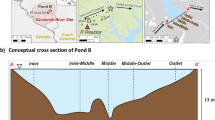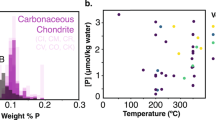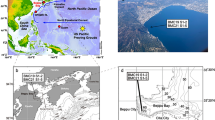Abstract
BECAUSE of its long effective half-life and its decay characteristics, and since it is deposited in bone, man-made plutonium is one of the more hazardous of the radio-elements. It is released in exceedingly small amounts from nuclear fuel reprocessing plants and in nuclear weapons tests, and, like the long-lived fission products evolved in this way, it may be detected at low concentrations in the marine environment. The concentration of plutonium by marine organisms is, therefore, of some interest. The total a-content of the edible seaweed Porphyra umbilicalis and of fillets of the plaice Pleuronectes platessa, collected near Windscale Works, are given by Dunster et al.1. Some data on the contemporary plutonium content of Pacific Ocean sea water and the concentration factors in certain marine plants and animals collected near the southern California coast are given by Pillai et al.2. The concentration factor is the ratio of the amount of plutonium per g of tissue (wet weight) to the plutonium in the same weight of sea water.
This is a preview of subscription content, access via your institution
Access options
Subscribe to this journal
Receive 51 print issues and online access
$199.00 per year
only $3.90 per issue
Buy this article
- Purchase on SpringerLink
- Instant access to full article PDF
Prices may be subject to local taxes which are calculated during checkout
Similar content being viewed by others
References
Dunster, H. J., Garner, R. J., Howells, H., and Wix, L. F. U., Hlth. Phys., 10, 353 (1964).
Pillai, K. C., Smith, R. C., and Folsom, T. R., Nature, 203, 568 (1964).
Bryan, G. W., and Ward, Eleen, J. Mar. Biol. Ass. U.K., 42, 199 (1962).
Author information
Authors and Affiliations
Rights and permissions
About this article
Cite this article
WARD, E. Uptake of Plutonium by the Lobster Homarus vulgaris. Nature 209, 625–626 (1966). https://doi.org/10.1038/209625b0
Issue date:
DOI: https://doi.org/10.1038/209625b0
This article is cited by
-
Uptake and effects of americium-241 on a brackishwater amphipod
Helgoländer Meeresuntersuchungen (1980)
-
Accumulation of americium 243 in selected brackish and marine invertebrates
Helgoländer Wissenschaftliche Meeresuntersuchungen (1978)
-
High absorption efficiency for ingested plutonium in crabs
Nature (1977)
-
Etude pr�liminaire, in situ, de la distribution du plutonium dans diff�rents tissus et organes de Cancer pagurus (Crustacea: Decapoda) et de Pleuronectes platessa (Pisces: Pleuronectidae)
Marine Biology (1976)
-
In vivo accumulation of radioactive polonium by the giant kelp Macrocystis pyrifera
Marine Biology (1976)



